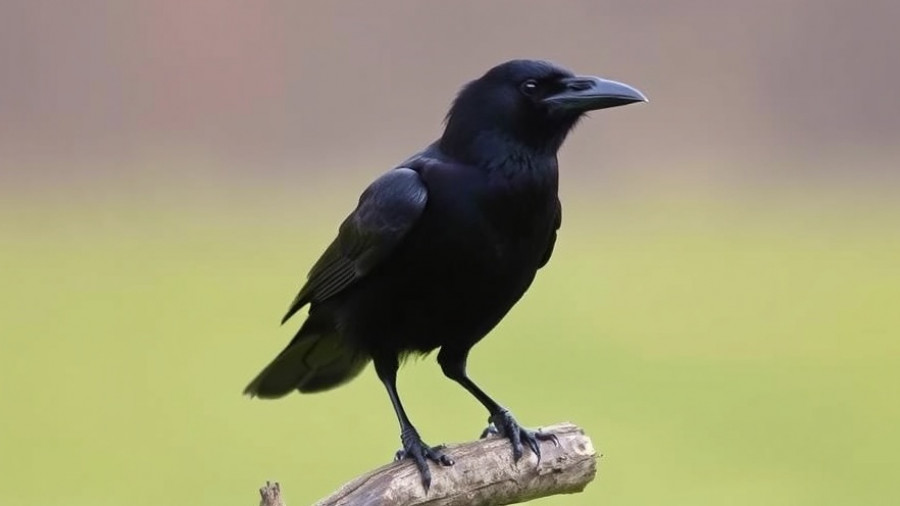
Meet the Common Raven: A Bird with Heart and Wit
Often shrouded in an air of mystery and superstition, Common Ravens are much more than their dark reputations suggest. Found throughout the Northern Hemisphere in habitats ranging from rocky peaks to urban rooftops, these highly intelligent birds have captured the curiosity of many. With an ability to adapt, they thrive in both wilderness and cities, making them a fixture in our world.
10 Fascinating Facts About Common Ravens
Here’s a countdown of ten fun and intriguing facts that showcase what makes these birds so special:
- Intelligence Beyond Compare: Common Ravens are known to be incredibly smart, capable of problem-solving and tool use. They can even mimic human speech, including that famous word "nevermore!" Much like apes, they display cognitive skills rarely seen in birds.
- Size Matters: While often mistaken for crows, the Common Raven is roughly the size of a Red-tailed Hawk, measuring around 2 feet in height. This significant size difference is one of the easiest ways to tell them apart and makes them a remarkable sight to behold.
- Songbirds at Heart: Despite their harsh caws, ravens are classified as songbirds, thanks to their complex vocalizations. These talented avians can learn and replicate a variety of calls and songs, showing off their musical prowess in the wild.
- Masterful Hunters: Beyond being scavengers, Common Ravens engage in collaborative hunting techniques. They’ve been observed distracting parent seabirds to steal their eggs, showcasing their craftiness and teamwork.
- Comeback Kids: Once on the brink of extinction in the eastern U.S. due to habitat loss and hunting, conservation efforts have aided their population recovery. Thanks to restored forests and increased food availability, ravens have made a triumphant return to their former ranges.
- Population Booms: While eastern populations have rebounded, Common Ravens in the West are experiencing explosive growth. In some areas like the Mojave Desert, their numbers have increased by over 700% in the last 40 years!
- Aerial Acrobats: Ravens are known for their playful nature and impressive aerial maneuvers. They perform rollicking aerial displays, including flips and somersaults, often as part of their courtship rituals.
- Emotional Connections: These social birds are surprisingly affectionate. Common Ravens mate for life and have been observed engaging in mutual grooming, strengthening their bonds through gentle cooing and allopreening.
- Cultural Significance: Throughout history, ravens have held symbolic meaning in various cultures, representing intelligence, prophecy, and duality. From Norse mythology to Native American legends, they continue to be significant figures.
- Widespread and Resilient: Their adaptability allows Common Ravens to thrive in diverse environments across the Northern Hemisphere, demonstrating their resilience and resourcefulness as a species.
The Heartwarming Side of Ravens
Ravens are more than just intelligent birds; they have emotional depths that many do not often consider. In observing their affectionate behaviors, it’s clear that they care for their mates and families. Similar to how pet owners feel about their furry companions, the emotional landscape of these birds mirrors the bonds many humans share with pets.
Understanding Our Feathered Friends
Learning about Common Ravens not only deepens our appreciation for wildlife but also enhances our understanding of nature's emotional complexities. As pet lovers, connecting their behavior to our bonds with animals helps foster empathy and respect for all species.
Let’s move forward with this knowledge and protect our natural world and its inhabitants. Participate in local conservation efforts or get involved with groups that raise awareness about the need for respectful wildlife management. Every small action counts!
 Add Row
Add Row  Add
Add 






Write A Comment